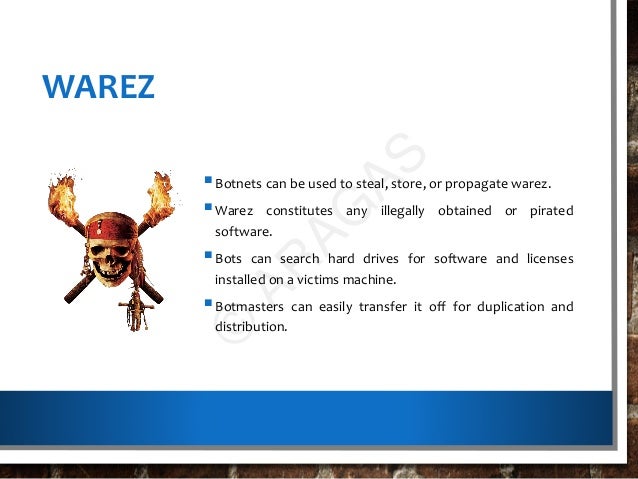Trinoo Software
Clive has been monitoring his IDS and sees that there are a huge number of ICMP Echo Reply packets that are being received on the external gateway interface. Further inspection reveals that they are not responses from the internal hosts' requests but simply responses coming from the Internet. What could be the most likely cause?

Start studying CEH: Test 8. Learn vocabulary, terms, and more with flashcards. You find that the computer has services running attached to TFN2k and Trinoo software. Find out how to remove Trinoo.Daemon from your PC. Sometimes adware is attached to free software to enable the developers to cover the. Trinoo download. ITworld covers a wide range of technology topics, including software, security, operating systems, mobile, storage, servers and data centers, emerging tech, and.
Someone has spoofed Clive's IP address while doing a DoS attack. Someone has spoofed Clive's IP address while doing a land attack. Someone has spoofed Clive's IP address while doing a fraggle attack. Someone has spoofed Clive's IP address while doing a smurf attack. Henry is an attacker and wants to gain control of a system and use it to flood a target system with requests, so as to prevent legitimate users from gaining access. What type of attack is Henry using?

Henry is executing commands or viewing data outside the intended target path b. Henry is taking advantage of an incorrect configuration that leads to access with higher-than expected privilege c. Henry is using a denial of service attack which is a valid threat used by an attacker d. Henry uses poorly designed input validation routines to create or alter commands to gain access to unintended data or execute commands.
You have been called to investigate a sudden increase in network traffic at XYZ. It seems that the traffic generated was too heavy that normal business functions could no longer be rendered to external employees and clients. After a quick investigation, you find that the computer has services running attached to TFN2k and Trinoo software. What do you think was the most likely cause behind this sudden increase in traffic? A network card that was jabbering. A bad route on the firewall.
Invalid rules entry at the gateway. A distributed denial of service attack. Bubba has just accessed he preferred ecommerce web site and has spotted an item that he would like to buy. Bubba considers the price a bit too steep.
He looks at the source code of the webpage and decides to save the page locally, so that he can modify the page variables. In the context of web application security, what do you think Bubba has changes? An integer variable. A hidden form field value. Av Voice Changer Software Diamond Edition 8.0.24. A hidden price value.
A page cannot be changed locally,as it is served by a web server. Take a look at the following attack on a Web Server using obstructed URL:%70%61%73%73%77%64 The request is made up of:%2e%2e%2f%2e%2e%2f%2e%2f% =./././%65%74%63 = etc%2f = /%70%61%73%73%77%64 = passwd How would you protect information systems from these attacks? Create rules in IDS to alert on strange Unicode requests. Use SSL authentication on Web Servers. Enable Active Scripts Detection at the firewall and routers. Configure Web Server to deny requests involving Unicode characters. You wish to determine the operating system and type of web server being used.
At the same time you wish to arouse no suspicion within the target organization. While some of the methods listed below work, which holds the least risk of detection? Use the netcraft web site look for the target organization's web site.
Telnet to the web server and issue commands to illicit a response. Use nmap in paranoid mode and scan the web server. Make some phone calls and attempt to retrieve the information using social engineering. This packet was taken from a packet sniffer that monitors a Web server. Picture: (Test 8 #30) This packet was originally 1514 bytes long, but only the first 512 bytes are shown here.
This is the standard hexdump representation of a network packet, before being decoded. A hexdump has three columns: the offset of each line, the hexadecimal data, and the ASCII equivalent. This packet contains a 14-byte Ethernet header, a 20-byte IP header, a 20-byte TCP header, an HTTP header ending in two line-feeds (0D 0A 0D 0A) and then the data. By examining the packet identify the name and version of the Web server?